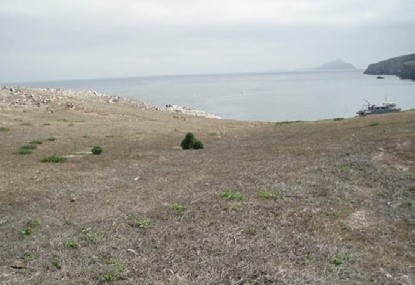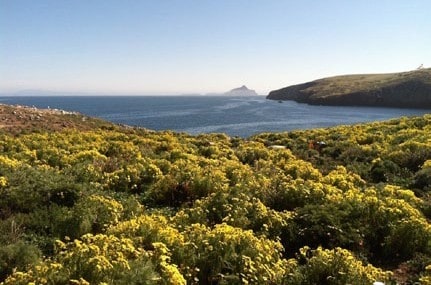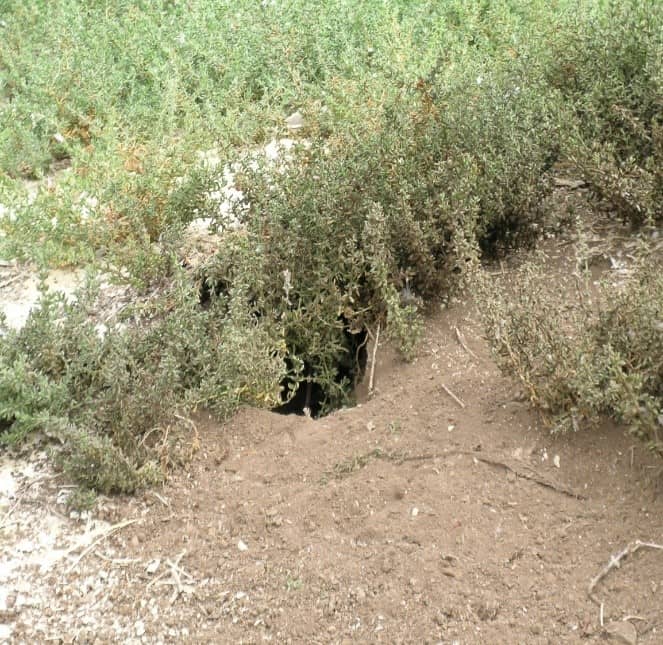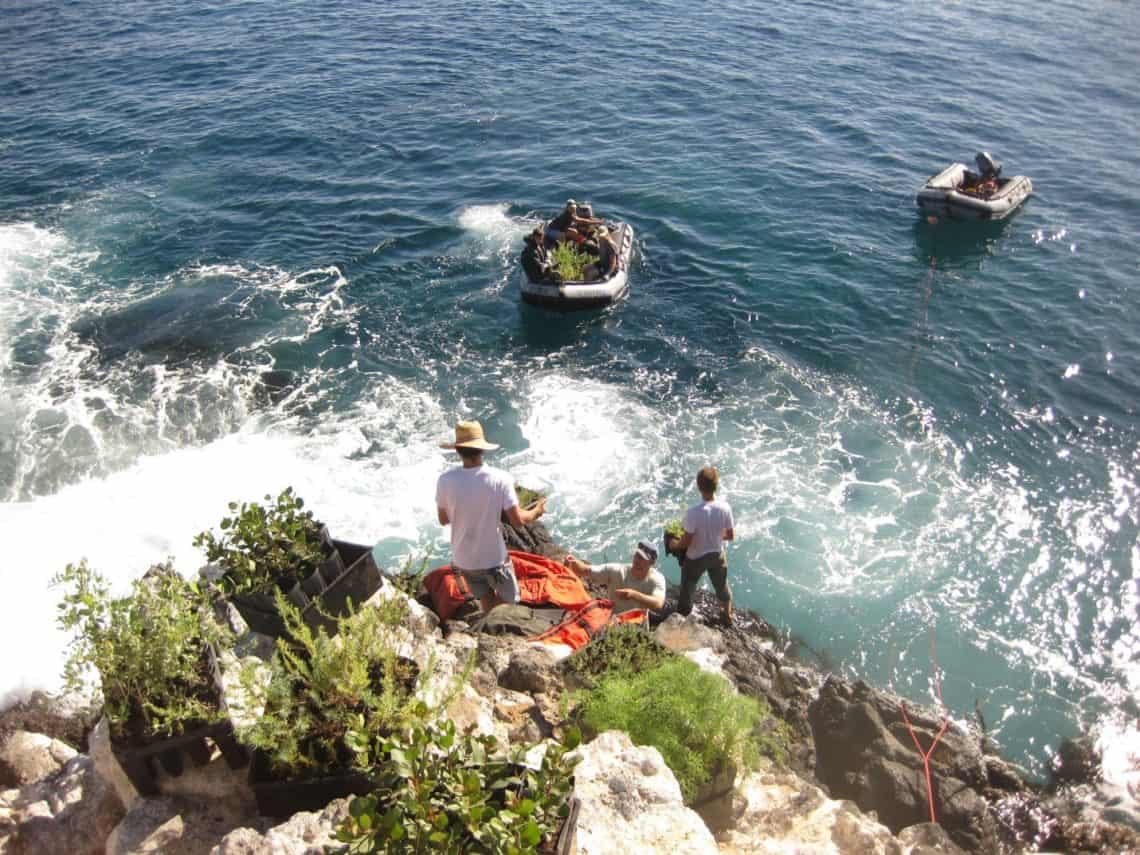By David Mazurkiewicz, Seabird Biologist, Channel Island National Park
Invasive, non-native plant species and island ecosystem degradation have affected seabird nesting habitat quality on many of the California Islands, imposing threats to population growth and recovery. Seabirds are important throughout the archipelago, with every island and most offshore rocks providing critical breeding and roosting habitat. The islands afford seabirds a safe haven from overwhelming predation pressure and human disturbance. Recent seabird habitat restoration work has been supported by NRDA funding via Montrose Settlements and Luckenbach Restoration Programs, designed to recover losses to seabirds affected by oil and chemical pollution. Currently, projects intended to benefit seabirds and restore breeding habitat are occurring on 13 of the islands.
Scorpion Rock is one such project location, located off the northeast end of Santa Cruz Island in Channel Islands National Park. It is an important seabird nesting and roosting location, but a legacy of human use and visitation allowed the spread of invasive, non-native plant species on Santa Cruz Island and adjacent Scorpion Rock. The altered vegetative cover likely contributed to decreased abundance and nesting habitat quality for burrow-nesting Cassin’s Auklet (Ptychoramphus aleuticus subsp. australis) and the crevice- and shrub-nesting Scripps’s Murrelet (Synthliboramphus scrippsi).

 Prior to restoration activities, Scorpion Rock was inhabited by a low diversity suite of introduced annual weeds. Non-native, invasive crystalline ice plant (Mesembryanthemum crystallinum) poses the most significant threat to native plants, soil chemistry, and the viability of the Cassin’s Auklet colony on Scorpion Rock. Dense mats of ice plant can prevent auklets from accessing their burrows and the soil. Seasonal desiccation of this annual weed releases concentrated salts to the soil. Over time, soil salinity increases and potentially can inhibit recolonization by native plants. The removal and control of non-native vegetation and out-planting of more than 9,000 native plants over a ten-year period (2008-18) has dramatically changed the landscape of Scorpion Rock. During this period, vegetation was converted from over 90% invasive weeds, to over 60% native cover.
Prior to restoration activities, Scorpion Rock was inhabited by a low diversity suite of introduced annual weeds. Non-native, invasive crystalline ice plant (Mesembryanthemum crystallinum) poses the most significant threat to native plants, soil chemistry, and the viability of the Cassin’s Auklet colony on Scorpion Rock. Dense mats of ice plant can prevent auklets from accessing their burrows and the soil. Seasonal desiccation of this annual weed releases concentrated salts to the soil. Over time, soil salinity increases and potentially can inhibit recolonization by native plants. The removal and control of non-native vegetation and out-planting of more than 9,000 native plants over a ten-year period (2008-18) has dramatically changed the landscape of Scorpion Rock. During this period, vegetation was converted from over 90% invasive weeds, to over 60% native cover.
Restoration of a native, perennial coastal sage scrub community on Scorpion Rock increased island biodiversity, and is enhancing soil structure, nesting conditions, and cover for seabirds. The project has contributed to the larger picture of California islands habitat restoration work by providing a better understanding of ecosystem response after restoration management actions. We found that restored native perennial plant cover stabilizes soil and prevents significant annual loss of soil. This, in turn, reduces threats to critical Cassin’s Auklet nesting habitat. The vegetative cover on Scorpion Rock and the increased access to soil and edge habitat for digging may have contributed to reduced predation of adult auklets during annual spring prospecting. The annual adult mortality during prospecting (late winter-spring) from 2007-2010 essentially stopped once perennial vegetation was established after 2011. We have not observed any adult mortality (i.e. carcasses, wing-sets) in the past six nesting seasons.

Ecosystem restoration takes time, patience, resourcefulness, and a significant investment of effort and resources. Reversing the impacts of invasive plants will undoubtedly prove more challenging than exotic herbivore and invasive mammal removal on islands. But without success in such efforts, the full conservation potential of the California Islands will not be realized. Collaboration and networking are important tools to improve results in many areas of restoration and conservation of species. On the California islands, a long-term commitment that includes intensive on-the ground restoration, applied research, and adaptive management is a prerequisite for restoration success. Because conservation organizations cannot work everywhere, they should strive to effect change beyond just the places they directly work. One strategy for broader impact is to develop a conservation solution to a problem affecting one place that others can then apply elsewhere. Scorpion Rock is a microcosm of the larger California Islands system. The collaborative efforts to restore seabird colonies and native vegetation on Scorpion Rock have helped inform efforts on other islands in the region, on both sides of the border, and at different scales, and will continue to do so.

